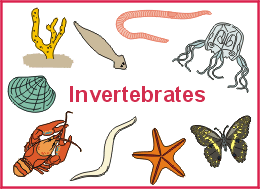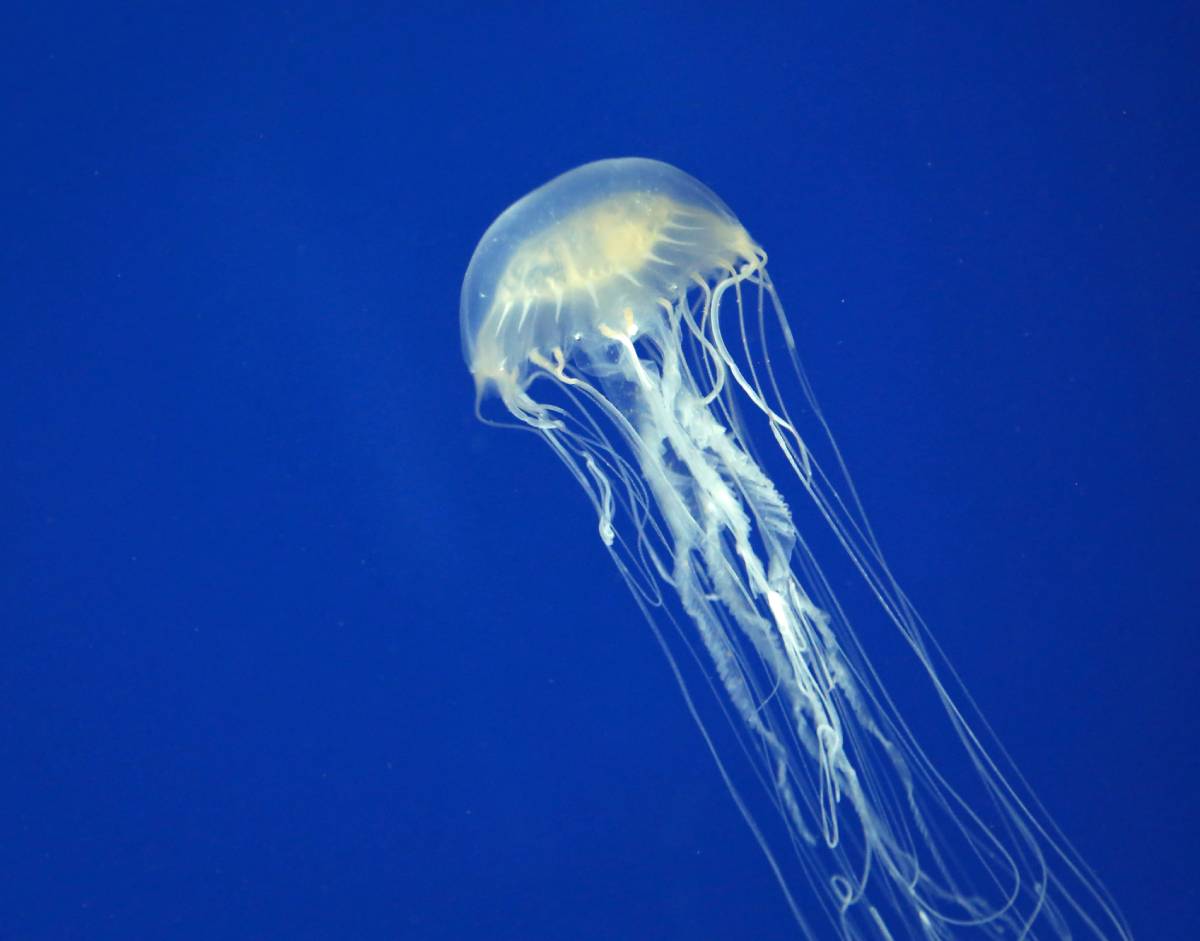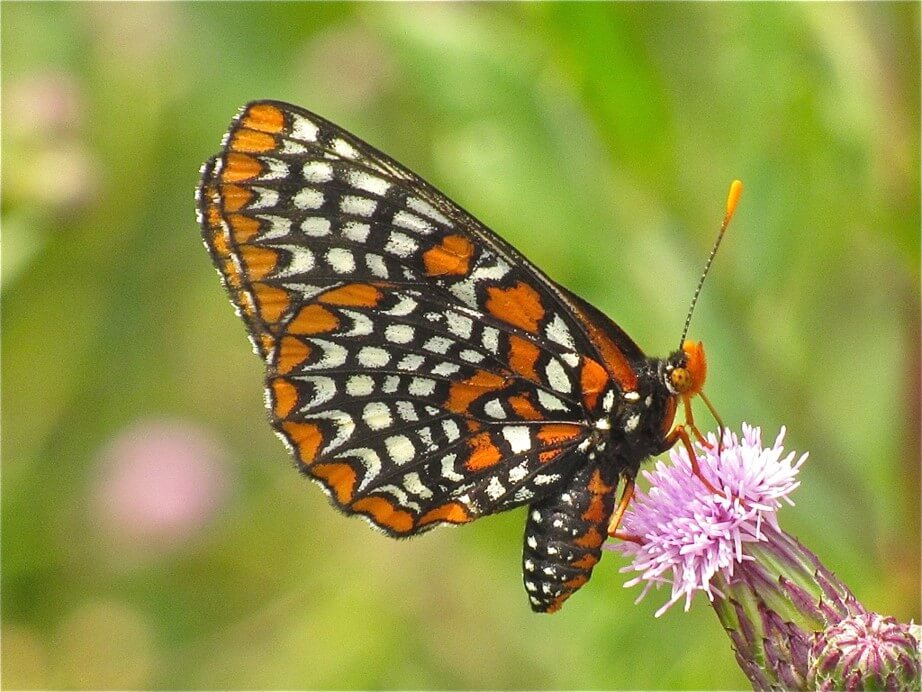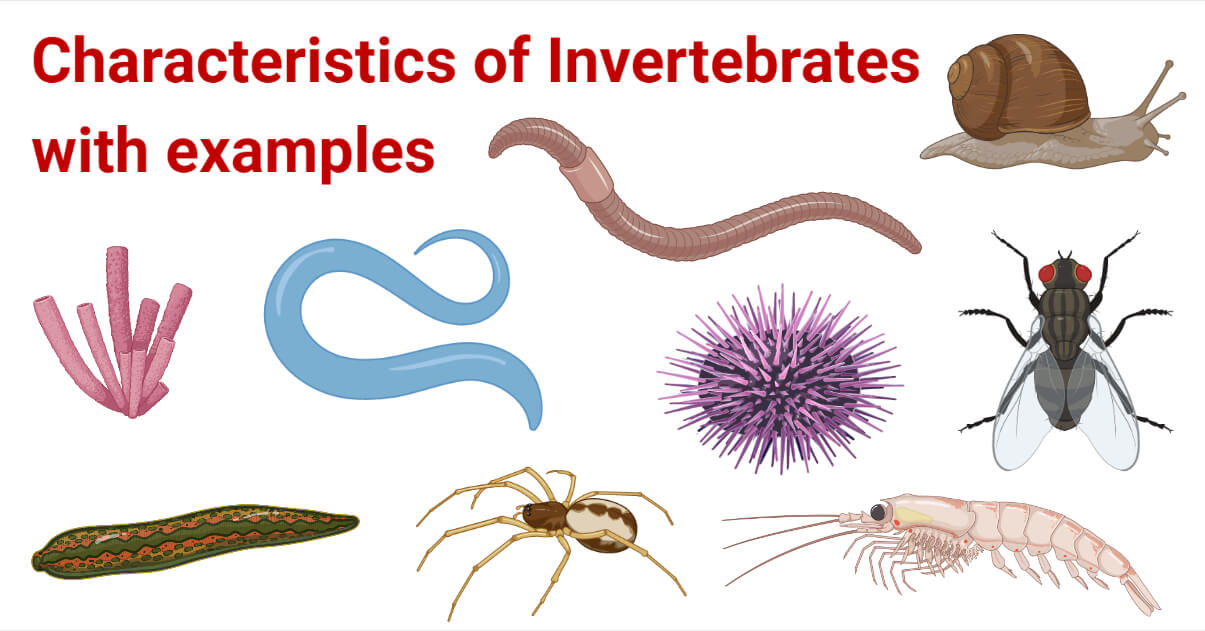Topic vertebrate invertebrate animals: Discover the fascinating world of vertebrate and invertebrate animals, a realm where the diversity and complexity of life reveal the wonders of evolution and adaptation in the animal kingdom.
Table of Content
- What is the difference between vertebrate and invertebrate animals?
- Distinguishing Characteristics of Vertebrates
- Overview of Invertebrate Animals
- Common Examples of Vertebrates
- Common Examples of Invertebrates
- Anatomical Differences Between Vertebrates and Invertebrates
- Evolutionary Perspectives on Vertebrates and Invertebrates
- YOUTUBE: Vertebrate and Invertebrate Animals - Educational Videos for Kids
- Ecological Roles of Vertebrate and Invertebrate Animals
- Adaptations in Vertebrates for Survival
- Adaptations in Invertebrates for Survival
- Impact of Environmental Changes on Vertebrates and Invertebrates
- Conservation Efforts for Vertebrate and Invertebrate Species
- Future Research Directions in Vertebrate and Invertebrate Studies
What is the difference between vertebrate and invertebrate animals?
The difference between vertebrate and invertebrate animals can be summarized as follows:
- Spine: Vertebrates have a spine or backbone, while invertebrates lack a spine.
- Complexity: Vertebrates are generally more complex, with specialized organs and systems, while invertebrates exhibit a wide range of complexity levels.
- Numbers: Invertebrates make up the majority of animal species, with over 97% of all known animals being invertebrates.
- Diversity: Invertebrates come in a wide variety of forms and are found in diverse habitats, including insects, worms, mollusks, arachnids, and more. Vertebrates include mammals, birds, reptiles, amphibians, and fishes.
- Movement: Vertebrates generally have more advanced locomotor abilities, such as walking, swimming, or flying, while invertebrates may have various modes of movement, including crawling, burrowing, or swimming.
- Protection: Vertebrates often have a more developed skeletal system that provides support and protection for internal organs, while invertebrates may rely on exoskeletons or other defense mechanisms.
Overall, the main distinction between vertebrate and invertebrate animals lies in the presence or absence of a backbone and associated anatomical differences.
READ MORE:
Distinguishing Characteristics of Vertebrates
Vertebrates, belonging to the subphylum Vertebrata, are distinguished primarily by the presence of a vertebral column or backbone. This backbone is a defining feature that sets them apart from invertebrates. The following points highlight the key characteristics of vertebrates:
- Internal Skeleton: Vertebrates possess a well-developed internal skeleton made of bone or cartilage, providing structural support.
- Complex Nervous System: They have an advanced nervous system, which is more complex than that of invertebrates, often leading to higher intelligence levels.
- Muscular System: A muscular system consisting primarily of bilaterally paired masses is another characteristic feature.
- Diverse Body Size: Vertebrates vary greatly in size, ranging from small frogs to large mammals like the blue whale.
- Variety of Species: Despite their diversity, vertebrates make up a smaller percentage of animal species compared to invertebrates.
- Major Classes: This group includes various classes such as fishes (Agnatha, Chondrichthyes, Osteichthyes), amphibians, reptiles, birds, and mammals.
These distinguishing features contribute to the vast diversity within the vertebrate subphylum and highlight their evolutionary complexity.

Overview of Invertebrate Animals
Invertebrates encompass a vast and diverse group of animals characterized primarily by the absence of a vertebral column or backbone. They form the majority of animal species on Earth. The following points provide a detailed overview of invertebrate animals:
- Definition and Classification: Invertebrates include all animal groups that do not fall within the subphylum Vertebrata. This makes them a paraphyletic grouping, with immense diversity in forms and species.
- Body Structure: Most invertebrates possess an exoskeleton or hydrostatic skeleton, differing vastly from vertebrates" internal skeletons.
- Diversity in Size: They range in size from microscopic organisms to large species like the colossal squid.
- Population and Distribution: Invertebrates constitute around 97% of all animal species and are found in a variety of habitats, from deep oceans to high mountains.
- Major Phyla: Well-known phyla include Arthropods (like insects and crustaceans), Mollusks (such as snails and octopuses), Annelids (like earthworms), and Cnidarians (including jellyfish).
- Biological and Ecological Roles: Invertebrates play crucial roles in ecosystems, such as pollination, decomposition, and serving as a food source for other animals.
This overview highlights the incredible variety and ecological significance of invertebrate animals, underscoring their importance in the global biodiversity tapestry.
Common Examples of Vertebrates
Vertebrates are a highly diverse group of animals known for their backbone or vertebral column. They encompass various species across multiple classes, each demonstrating unique characteristics and adaptations. Some common examples include:
- Fishes (Classes Agnatha, Chondrichthyes, Osteichthyes): These are the most primitive vertebrates, including jawless fishes like lampreys, cartilaginous fishes like sharks, and bony fishes such as salmon and goldfish.
- Amphibians (Class Amphibia): They include frogs, toads, salamanders, and newts, known for their ability to live both in water and on land.
- Reptiles (Class Reptilia): This class includes lizards, snakes, turtles, and crocodiles, characterized by their scaly skin and ability to thrive in diverse environments.
- Birds (Class Aves): Birds are known for their feathers, beaks, and the unique ability to fly, with species ranging from tiny hummingbirds to large ostriches.
- Mammals (Class Mammalia): This class is distinguished by the presence of mammary glands and fur or hair. It includes a vast range of animals from humans and whales to lions and bats.
These examples represent the broad spectrum of vertebrate life, showcasing the adaptability and evolutionary success of this animal group.
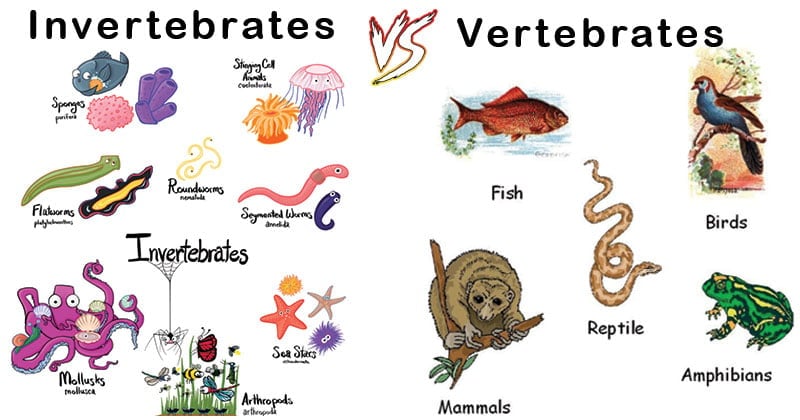
Common Examples of Invertebrates
Invertebrates, making up a majority of animal species on Earth, are a diverse group lacking a vertebral column or spine. They are characterized by a wide range of forms and sizes, and inhabit various ecosystems. Some common examples of invertebrates include:
- Annelids: This group includes segmented worms like earthworms and leeches, known for their role in soil aeration and nutrient recycling.
- Arthropods: The largest phylum, consisting of insects, arachnids, and crustaceans. Examples include ants, bees, spiders, crabs, and lobsters. They are known for their segmented bodies and exoskeletons.
- Mollusks: This diverse group includes snails, slugs, octopuses, and clams, characterized by their soft bodies, some with shells.
- Cnidarians: Aquatic animals like jellyfish and corals, known for their stinging cells used for capturing prey.
- Echinoderms: This group includes sea stars and sea urchins, recognized for their radial symmetry and spiny skin.
These examples showcase the immense diversity and ecological importance of invertebrates in various habitats across the globe.
Anatomical Differences Between Vertebrates and Invertebrates
The animal kingdom is broadly divided into vertebrates and invertebrates, and they exhibit several distinct anatomical differences. Understanding these differences is key to comprehending the vast diversity of animal life on Earth. Key anatomical distinctions include:
- Skeletal Structure: Vertebrates possess an internal skeleton with a backbone made of vertebrae, while invertebrates lack a vertebral column. Invertebrates may have an exoskeleton or hydrostatic skeleton for support.
- Nervous System: Vertebrates typically have a more complex and developed nervous system compared to invertebrates. Invertebrates often have simpler, less centralized nervous systems.
- Size Variation: Generally, vertebrates tend to be larger than invertebrates, though there are exceptions like the colossal squid, which is an invertebrate and can grow to significant sizes.
- Circulatory System: Vertebrates have a closed circulatory system, whereas most invertebrates have an open circulatory system, where blood is not entirely contained within blood vessels.
- Eyes: A majority of invertebrates possess compound eyes, unlike vertebrates.
- Body Symmetry: Vertebrates display bilateral body symmetry, whereas invertebrates can exhibit either radial or bilateral symmetry.
These anatomical differences between vertebrates and invertebrates are fundamental to their classification and reflect their evolutionary paths and ecological roles.
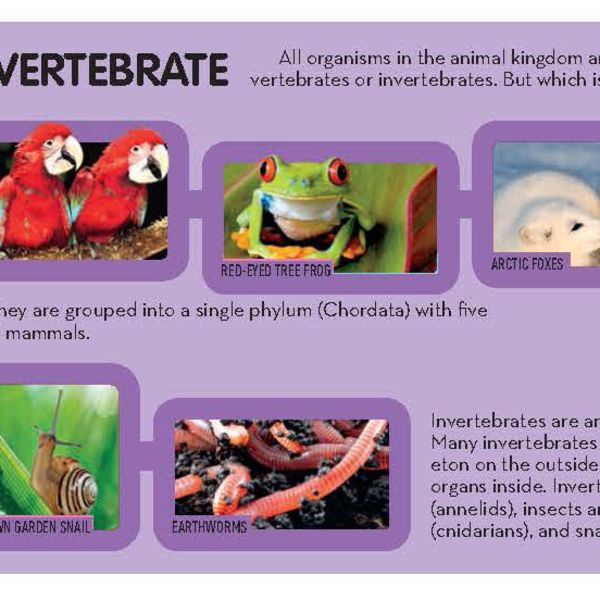
Evolutionary Perspectives on Vertebrates and Invertebrates
The evolutionary history of vertebrates and invertebrates reveals a complex and fascinating journey of life on Earth. Both groups have distinct evolutionary paths that have shaped their diversity and adaptations. Key evolutionary aspects include:
- Origin and Diversification: Vertebrates and invertebrates diverged from common ancestral forms. Vertebrates are part of the subphylum Vertebrata under the phylum Chordata, characterized by a backbone and more complex structures, while invertebrates, lacking a vertebral column, represent a more diverse and numerous group of animals.
- Evolutionary Milestones: The evolution of vertebrates marked significant milestones, such as the development of a backbone, an advanced nervous system, and specialized sensory organs. In contrast, invertebrates evolved with a wide variety of body plans, ranging from simple sponges to complex cephalopods like octopuses.
- Adaptive Radiation: Both groups have undergone adaptive radiation, evolving into a multitude of forms to occupy various ecological niches. Invertebrates, for instance, display a range of adaptations from exoskeletons in arthropods to the hydrostatic skeletons in cnidarians.
- Fossil Evidence: Fossil records provide insights into the evolution of these groups, with vertebrates showing a clear lineage from early aquatic forms to terrestrial animals, while invertebrates offer a diverse fossil history indicating their ancient existence and variation.
Understanding the evolutionary perspectives of vertebrates and invertebrates offers a glimpse into the complexity of life"s history and the myriad ways in which different life forms have adapted to their environments over millions of years.
Vertebrate and Invertebrate Animals - Educational Videos for Kids
Discover the fascinating world of educational videos that will ignite your curiosity and expand your knowledge. With captivating visuals and informative content, these videos offer an immersive learning experience like no other.
Vertebrate and Invertebrate Animals - Videos for Kids
Immerse yourself in a captivating collection of videos that will entertain, inspire, and educate. From mind-blowing science experiments to captivating historical documentaries, these videos promise an exciting journey of discovery that you won\'t want to miss!
Ecological Roles of Vertebrate and Invertebrate Animals
Vertebrate and invertebrate animals play pivotal roles in maintaining ecological balance and biodiversity. Their contributions to various ecosystems are diverse and significant. Some key ecological roles include:
- Food Web Dynamics: Vertebrates and invertebrates are integral parts of food webs. Invertebrates often serve as primary consumers and decomposers, crucial for nutrient cycling, while vertebrates often function as predators and herbivores, maintaining population balance in their habitats.
- Pollination and Seed Dispersal: Many invertebrates, especially insects, are vital pollinators for a wide variety of plants. This pollination is crucial for the reproduction of many plant species and the production of fruits and seeds.
- Ecosystem Engineers: Certain invertebrates and vertebrates modify their environments significantly, creating habitats for other organisms. For instance, earthworms aerate the soil, affecting its structure and nutrient content, which benefits plant growth.
- Trophic Cascade Effects: The presence or absence of key vertebrate species can lead to significant changes in ecosystem structure and function. For example, the reintroduction of wolves in Yellowstone National Park helped control elk populations and restored ecological balance.
- Biodiversity Indicators: Both vertebrates and invertebrates can act as indicators of the health of ecosystems. Changes in their populations can signal alterations in environmental conditions or the onset of ecological problems.
The diverse roles of vertebrates and invertebrates underscore their importance in ecosystems, highlighting the need for their conservation to ensure ecological stability and biodiversity.
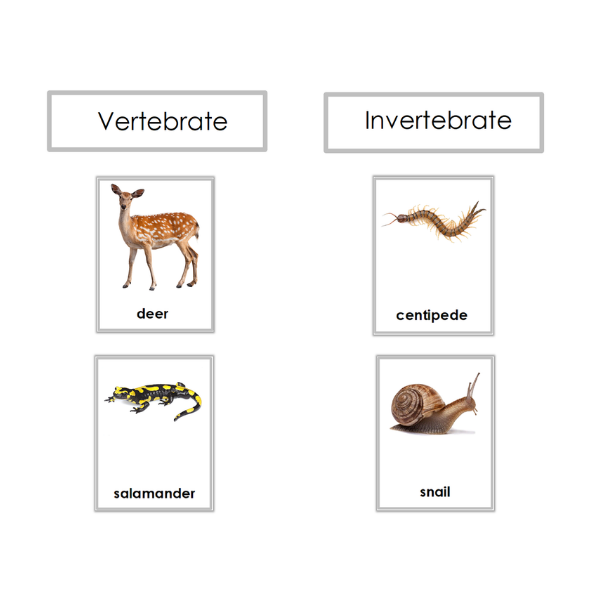
Adaptations in Vertebrates for Survival
Vertebrates have developed a variety of adaptations to survive in diverse environments. These adaptations have evolved over millions of years, enabling vertebrates to thrive in almost every habitat on Earth. Some key adaptations include:
- Endoskeleton: The internal skeleton made of bones or cartilage provides structural support, facilitates movement, and protects internal organs.
- Advanced Nervous System: A complex brain and spinal cord enable higher cognitive functions, sensory perception, and efficient coordination of bodily functions.
- Temperature Regulation: Many vertebrates, especially mammals and birds, have developed methods of thermoregulation, such as fur, feathers, and sweat glands, to maintain a stable internal temperature.
- Respiratory Adaptations: Lungs in terrestrial vertebrates and gills in aquatic vertebrates have evolved to maximize oxygen absorption in different environments.
- Reproductive Strategies: Diverse reproductive methods, including internal fertilization and external egg laying, ensure the survival and spread of species in various conditions.
- Locomotion: Adaptations in limbs, fins, and wings allow vertebrates to move efficiently on land, in water, and through the air.
- Camouflage and Defense Mechanisms: Various vertebrates have developed camouflage, mimicry, and physical defenses like shells or quills to protect themselves from predators.
These adaptations highlight the evolutionary success of vertebrates and their ability to occupy a wide range of ecological niches.
Adaptations in Invertebrates for Survival
Invertebrates, which comprise a vast majority of animal species, exhibit a remarkable array of adaptations for survival. These adaptations are key to their success in diverse environments. Some notable adaptations include:
- Body Cavities: The evolution of structures like a pseudocoelom in nematodes and a true coelom in annelids provided internal support and space for organ development, enhancing their survival capabilities.
- Complete Digestive System: The development of a complete digestive system with separate mouth and anus in many invertebrates, such as roundworms, allowed for more efficient food processing and energy utilization.
- Nervous System Development: The evolution of nerve nets in radially symmetric animals like cnidarians and a more centralized nervous system in bilaterally symmetric invertebrates facilitated better sensory integration and response to environmental stimuli.
- Respiratory and Circulatory Systems: Diverse respiratory adaptations, such as tracheae in insects, and the development of circulatory systems in various invertebrates supported larger and more complex body structures.
- Segmentation: The evolution of body segmentation in groups like annelids and arthropods increased flexibility and movement efficiency, aiding their survival in different habitats.
- Limbs and Wings: The evolution of limbs and wings in arthropods enabled these invertebrates to explore new environments, from terrestrial to aerial, expanding their ecological niches.
These adaptations highlight the incredible evolutionary journey of invertebrates and their ability to thrive in almost every ecological niche on the planet.

Impact of Environmental Changes on Vertebrates and Invertebrates
Environmental changes have a profound impact on both vertebrates and invertebrates, affecting their survival, behavior, and ecology. Key impacts include:
- Climate Change: Shifts in climate patterns have altered habitats, leading to changes in species distribution and behavior. Vertebrates such as amphibians and reptiles show evidence of altered immune responses and shifts in geographical ranges, while invertebrates like insects are experiencing significant declines in biomass and diversity.
- Habitat Destruction: Loss and fragmentation of habitats due to human activities have led to a decline in vertebrate species richness. Invertebrates, particularly those specialized in certain habitats, face increased extinction risks.
- Pollution and Contamination: Pollution affects the health and reproductive success of both vertebrates and invertebrates. For example, aquatic vertebrates and invertebrates are particularly vulnerable to water pollution and ocean acidification.
- Invasive Species: The introduction of invasive species disrupts local ecosystems, impacting the survival and distribution of native vertebrate and invertebrate species.
- Transgenerational Immune Changes: In vertebrates, environmental stressors can lead to transgenerational immune changes, affecting the resilience of future generations to diseases and environmental challenges.
Understanding these impacts is crucial for conservation efforts and for maintaining the ecological balance.
Conservation Efforts for Vertebrate and Invertebrate Species
Conservation efforts for vertebrate and invertebrate species are essential for preserving biodiversity and the balance of ecosystems. These efforts vary widely and include both global and localized initiatives. Key aspects of these conservation efforts include:
- Invertebrate Conservation Organizations: Organizations like The Xerces Society focus on protecting invertebrates and their habitats through scientific research, habitat restoration, and advocating for reduced pesticide use. They also engage in pollinator and endangered species conservation.
- International Union for Conservation of Nature (IUCN): The IUCN plays a critical role in assessing the conservation status of species, including invertebrates, and instigating new conservation actions. Their Red List assessments are instrumental in identifying species at risk.
- Educational and Community Engagement: Educating the public and engaging communities in conservation activities, such as creating pollinator habitats and participating in community science projects, are crucial for the conservation of both vertebrates and invertebrates.
- Policy and Legislation: Developing and implementing policies and legislation that protect habitats and regulate activities impacting vertebrate and invertebrate species are vital components of conservation strategies.
- Research and Monitoring: Continuous research and monitoring are essential to understand the status of species, identify threats, and evaluate the effectiveness of conservation measures.
These conservation efforts highlight the importance of a multifaceted approach, combining scientific research, policy-making, public engagement, and on-ground actions to protect vertebrate and invertebrate species.
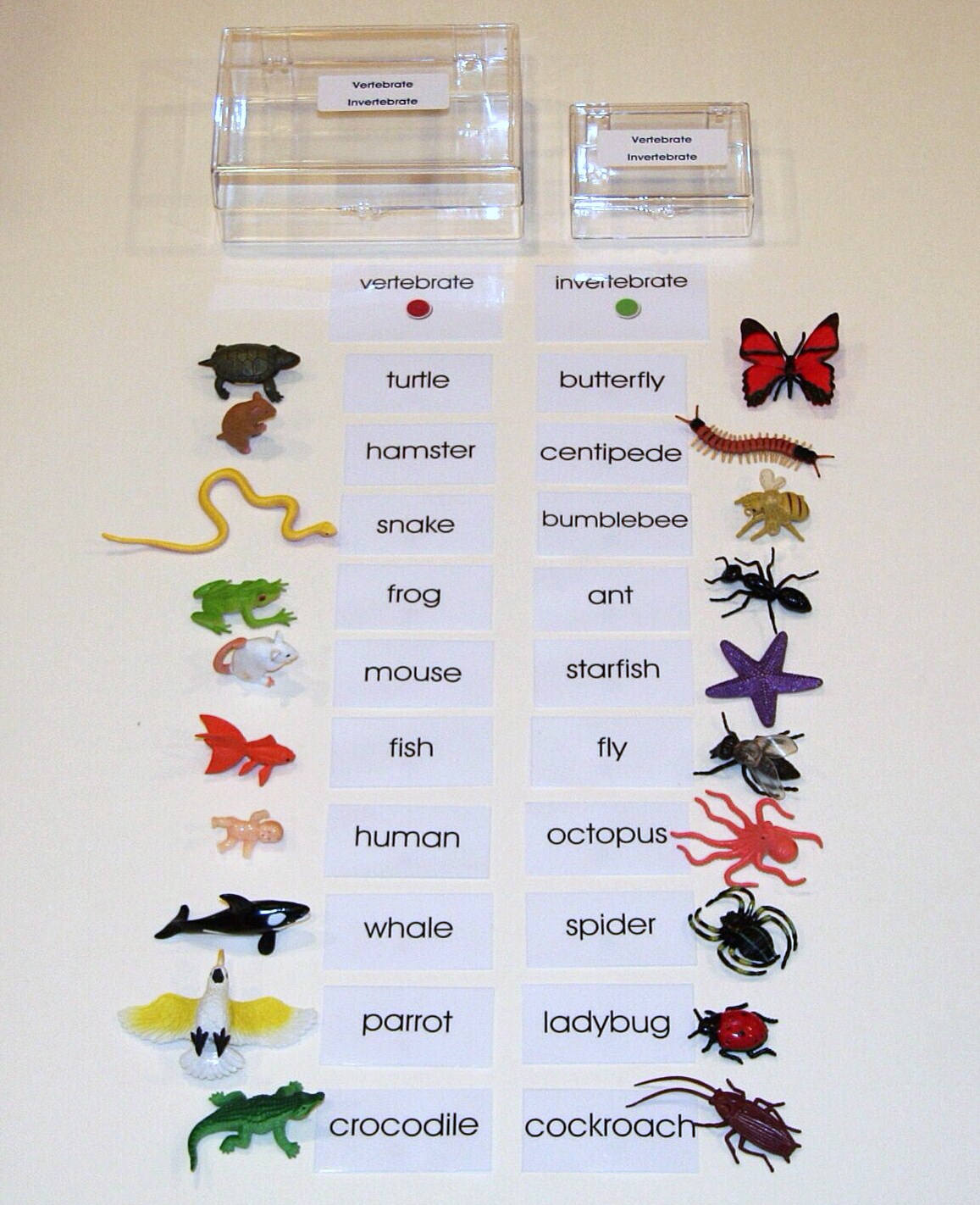
READ MORE:
Future Research Directions in Vertebrate and Invertebrate Studies
Research in the field of vertebrate and invertebrate studies is continually evolving, with several future directions likely to gain prominence. These areas of research are critical for deepening our understanding of these diverse groups of animals and their roles in ecosystems. Key future research directions include:
- Climate Change Impact Studies: Focused research on how climate change specifically affects the physiology, distribution, and behavior of both vertebrate and invertebrate species.
- Genetic and Epigenetic Research: Advanced studies in genetics and epigenetics to understand the evolutionary adaptations and responses of these animals to environmental changes.
- Conservation Genomics: Utilizing genomics to identify conservation priorities and strategies for both vertebrates and invertebrates, especially for endangered and vulnerable species.
- Behavioral and Ecological Interactions: Investigating the complex interactions between vertebrates and invertebrates within ecosystems, including predator-prey dynamics and mutualistic relationships.
- Impact of Human Activities: Studying the effects of urbanization, pollution, and habitat destruction on vertebrate and invertebrate populations and communities.
- Novel Technologies in Research: Incorporating emerging technologies like remote sensing, bioinformatics, and AI to enhance data collection and analysis in field studies.
- Integrative and Interdisciplinary Approaches: Promoting cross-disciplinary research combining biology with other scientific fields to address complex ecological and environmental challenges.
These future research directions will not only contribute to scientific knowledge but also inform conservation policies and practices for the preservation and protection of vertebrate and invertebrate diversity.
In exploring the intricate world of vertebrates and invertebrates, we uncover the richness and complexity of life, highlighting the urgent need to understand and protect these vital components of our natural world.





